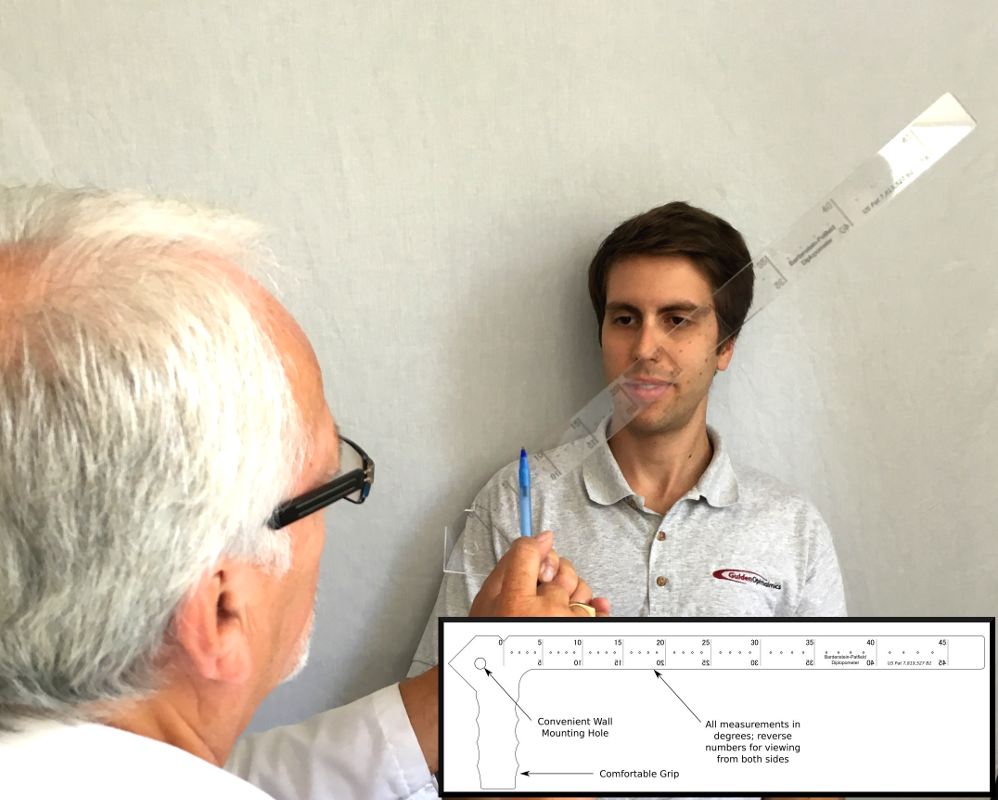This device is calibrated for use at 16 inches (40 cm) from the patient. This distance is measured from the notch on the device to the farthest number (45) on the device. The numbers on the device are degree measurements. Simply hold the device first at 0, then 45, 90, 135, 180, 225, 270, and finally 315 degrees. The pointed handle can be used to easily orient the device at multiples of 45 degrees. Once the device is in the desired orientation, slide a Q-tip or other target from the notch towards the far end of the device. Ask the patient to report when the tip becomes two images. This measurement should be recorded on the data recording form.
The device comes with a convenient hole for wall mounting, a comfortable handle, and a PDF data recording form is available for download. The form can be completed and scanned into the electronic medical record to track changes in double vision from visit to visit.
The device is made from solid acrylic, so do NOT use alcohol to clean. Mild soap and water is okay.
The device facilitates the sensitive detection of diplopia over the full field of vision (greater than any handheld instrument), the ability to simply, quickly, and inexpensively quantize diplopia ( at the same level as any instrument used) and thus detect progression of conditions such as thyroid myopathy, orbital abscess, tumors, or microvascular cranial neuropathies.
This quantitative sensitivity and reproducibility enables the ability to evaluate the therapeutic effect of treatments of diplopia, determine its causes, and guide patient management. It also allows correlations to be made between clinical diplopia and the patients symptoms by defining graphically where diplopia occurs making it easier for patients to understand their limitations and to appreciate quantitative improvements or worsening when it is not clinically obvious. It can identify small islands of diplopia often overlooked by other methods.
Finally, its portability and elegant simplicity allow it to be used in 2 types of settings that remarkably enhance its utility: at the bedside and emergency room where quantitative assessment of diplopia is important but often not done because equipment is not available, and in the offices of non-eye care providers such as neurologists and endocrinologists, where detection and evaluation of diplopia are critical for patient care.

